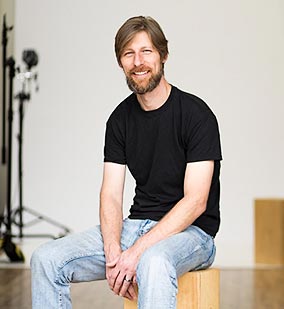About this course
In this course, you’ll learn the basics of natural light on-location food photography as well as how to mix natural light with strobes. Rob also covers equipment, basic food photo retouching in Photoshop, workflow, and basic food styling tools, as well as giving his top tips for acquiring and keeping clients.
Duration
3 hours, 49 minutes
Level
Intermediate
Includes
Unlimited Access
This course is for you, if you …
… are at a beginner to intermediate level in food photography.
… want to see a start-to-finish food shoot.
… want to pick up some great general tips about becoming a food photographer.
About the course’s
Instructor

Rob Andrew
I started shooting product images while running a web design business here in San Diego. I quickly became bored with sitting at the computer and excited beyond comprehension about photography. My first images were of custom made knives but as a mostly “self-taught” photographer, learning from books, workshops and websites like Photigy. I’ve shot many different styles including fashion, lifestyle, portraiture and everything in between. Lately, I’ve rekindled my interest in still life photography and food and beverage in particular. I have focused my commercial portfolio on food, portraiture and lifestyle as well as a bit of product work.
I now live midway between San Diego and L.A., and operate a studio in Mira Mesa, CA. I’ve been a full-time photographer since 2011. In that short time, I’ve been privileged to shoot for brands like John Deere, Perfect Foods Bar, Shakesmart, Gordon Rush, as well as magazines like Westways, Woman’s World, First for Women, WebMD and more.
When I’m not shooting, I love snowboarding, hiking, camping, playing guitar and hanging out with my beautiful wife and daughter.
Contact me any time if you’d like to discuss whether I would be a good fit for your creative project, I’d love to hear from you!
Course Breakdown
Total Running Time: 4+ hours
Level: Intermediate
Rob goes over the main camera equipment, lenses and other camera-related items he brings on a typical food shoot.
In this clip we discuss basic tools you can bring with you to help style food (even if you’re not a professional food stylist).
In this video, you’ll learn about the lighting gear involved in food photography and Rob’s philosophy of “going light” with minimal equipment.
Hello from the wooden spoon!
Continuing to explore the first dish, we’ll adjust the composition and lighting of the shot.
Our first retouch is covered in this video. Learn about brightness/levels adjustments, cropping, cloning and healing, fixing issues on the plate, and content-aware fill.
In shooting our second dish (duck confit, farro salad, olives, pickled raisins, and oranges), we discuss and show examples of flash vs. daylight/flash mixture. We use the 4-foot softbox.
In Photoshop, learn how to fix a spill, clone distractions, duplicate a drop of sauce and more.
Taking a natural-light food shot with bounce cards and using a fresh table surface scouted from outside.
Continuing our dessert shoot, we’ll change the composition to finalize things and polish them up a bit.
Continuing our dessert shoot, we’ll change the composition to finalize things and polish them up a bit.
Rob talks about the composition, selecting the right image and retouching. Photoshop techniques include liquify, cloning, and brightening.
A second visit to the restaurant. Background and lighting gear for shooting a beet salad.
Photographing a beet salad using the strobe in an octobank. Exploring a soft quality of light.
See the difference between the way an octobank lights the salad vs. a cheap shoot through an umbrella.
This one needed a bit more post-production work. We discuss compositing two similar images to make one final image and making more major repairs to a photo.
Photographing a burger with two light sources and daylight for the background.
In this video we colorize the background for a more interesting look and work with the clone stamp and liquify tools.
Introduction to Rob’s workflow, including Photo Mechanic, Capture One and Photoshop interaction.
Rob shows off a couple of studio items.
Who the clients are in food photography.
Some ways of advertising your food photography services.
Continuing our discussion about advertising and social media, as well as our philosophy of using Instagram.
Some tips on keeping clients happy and strategies you can use to keep them coming back.
Sign up for the course
REVIEWS
See what other people have to say about their learning experience.
All rights reserved 2018. Terms of Service and Privacy Policy
BACK TO SCHOOL SALE:
Use Code “BACK2SCHOOL”
and get 50% OFF
Sale Ends In:
Days
Hours
Minutes
Seconds

